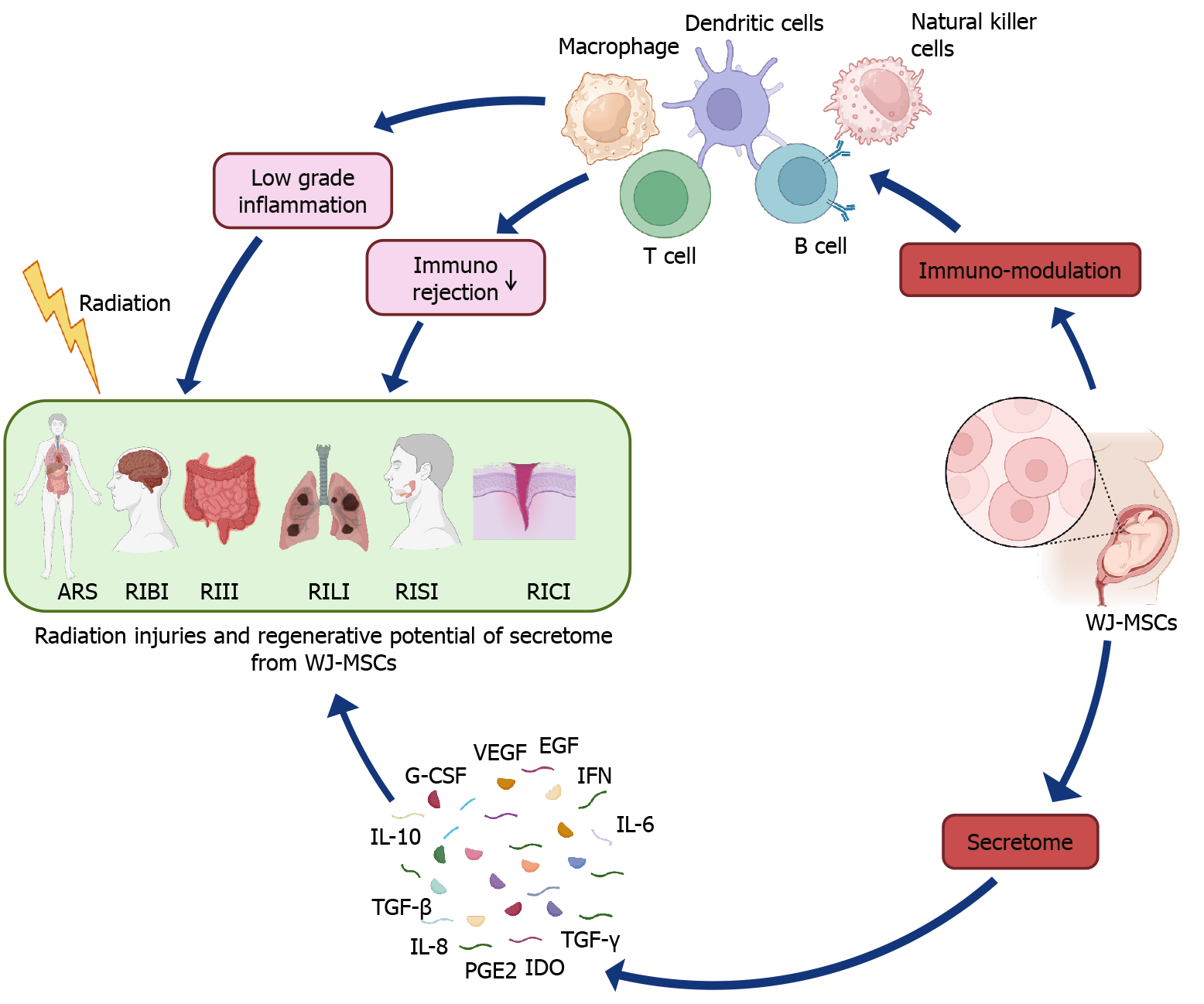Copyright
©The Author(s) 2024.
World J Stem Cells. Jul 26, 2024; 16(7): 742-759
Published online Jul 26, 2024. doi: 10.4252/wjsc.v16.i7.742
Published online Jul 26, 2024. doi: 10.4252/wjsc.v16.i7.742
Figure 4 Illustration of multifaceted role of Wharton’s jelly mesenchymal stem cells in mitigating radiation-induced injuries through direct and indirect immunoregulation.
These cells expertly modulate key immune players: B-cells, macrophages, dendritic cells, and natural killer cells, maintaining controlled inflammation. Wharton’s jelly mesenchymal stem cells (WJ-MSCs) engage in immune regulation via T-cell interactions, displaying HLA class I molecules while lacking costimulatory molecules, thus minimizing rejection risks. In inflamed environments, CD40 and HLA class II molecules may be expressed. WJ-MSCs’ secretome is a potent source of regenerative factors. It contains prostaglandin E2 (PGE2), hepatocyte growth factor (HGF), endothelial growth factor (EGF), vascular endothelial growth factor (VEGF), interleukin (IL)-6, IL-10, transforming growth factor (TGF)-β1, TGF-γ, GCSF, soluble HLA-G5, and soluble galectins (1, 3, and 9). Additionally, WJ-MSCs express indoleamine-2,3-dioxygenase (IDO), driving tryptophan depletion in the medium and generating tryptophan metabolites (kynurenine, 3-hydroxykynurenine, and kynurenic acid). This intricate web of immunomodulation and soluble factors highlights WJ-MSCs’ therapeutic potential in radiation injury recovery (created with BioRender.com). IFN: Interferon; ARS: Acute radiation syndromes; RIBI: Radiation-induced brain injury; RICI: Radiation-induced cutaneous injury; RIII: Radiation-induced intestinal injury; RILI: Radiation-induced lung injury; RISI: Radiation-induced salivary gland injury.
- Citation: Sharma P, Maurya DK. Wharton’s jelly mesenchymal stem cells: Future regenerative medicine for clinical applications in mitigation of radiation injury. World J Stem Cells 2024; 16(7): 742-759
- URL: https://www.wjgnet.com/1948-0210/full/v16/i7/742.htm
- DOI: https://dx.doi.org/10.4252/wjsc.v16.i7.742









